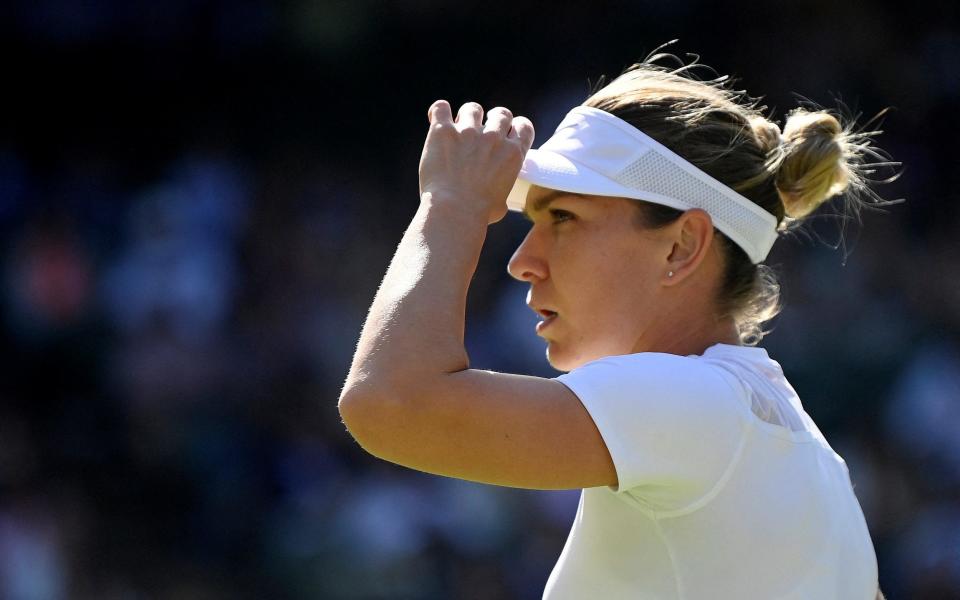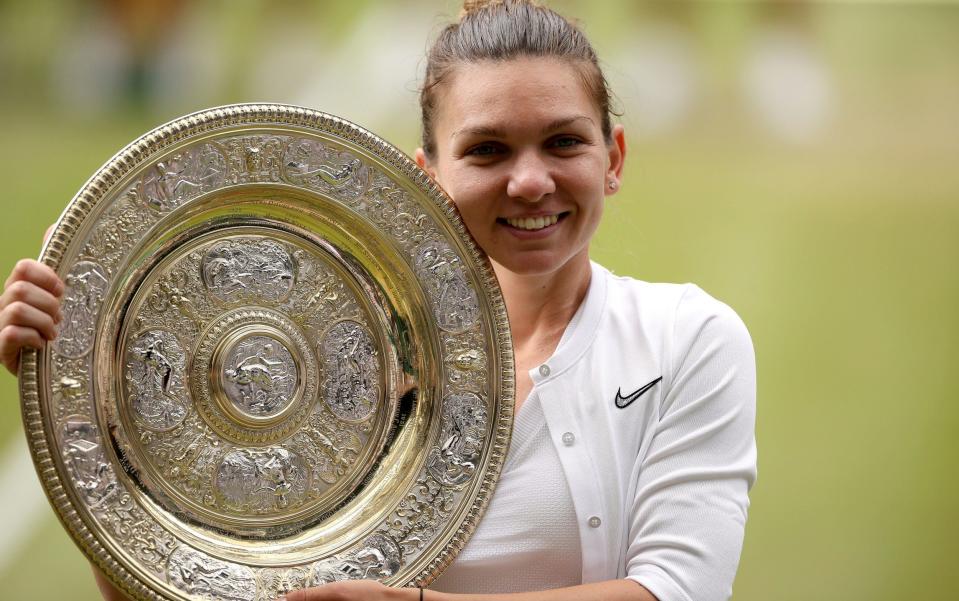Simona Halep 'shocked and disappointed' as doping hearing is delayed

Simona Halep, the former world No 1 and Wimbledon champion, faces further delays in her attempts to clear her name over escalating blood-doping charges, despite her furious statements on social media about the process.
Halep was hit with a second charge by the International Tennis Integrity Agency last week – this one for irregularities in her ABP (athlete biological passport) – to go with the earlier positive test she had recorded for the banned anaemia drug Roxadustat.
Posting on Twitter, Halep complained that "I am once again extremely shocked and disappointed by the ITIA's attitude. The ITIA publicly states one thing while privately doing another, I have repeatedly asked for my hearing and the ITIA has repeatedly sought to delay it."
Yet the ITIA say that the independent tribunal panel will need time to consider all the evidence, especially as Halep is now the subject of the first ABP case ever to be brought against a professional tennis player.
Halep has been looking to get on the front foot in the last month, first giving an interview to the Tennis Majors website, and then posting her frustrations on social media.
She has been supported by her former coach Darren Cahill as well as his successor Patrick Mouratoglou. But some of the arguments they raise – including the insistence that three “experts” have examined her blood and declared it perfectly normal – appear out of step with the nature of the ABP process.
Rather than sniffing out specific banned substances, the biological passport is designed to detect tampering by tracking certain markers. In other words, your blood could be “normal”, according to the varying parameters of the population. But if it is a different “normal” to what it was a few months ago, that might give cause for further investigation.

Halep originally tested positive for Roxadustat at the US Open in late August, and has since blamed that result on contamination. She says that her independent tribunal hearing was originally scheduled for February and then for March, but has already been postponed twice.
"When is it going to stop?” said Halep. “I ask the question once again. I am entitled to a quick hearing. Acting this way is contrary to my rights."
Yet Halep’s wait appears likely to go on, even beyond her suggestion last week that she might receive a hearing at the end of this month.
A statement released by the ITIA on Tuesday said that “We have proposed that both charges are heard together to avoid multiple hearings. To do this, we wish to provide all parties (including the independent tribunal) sufficient time to consider the significant materials associated with the latest charge.
“Ultimately it is a decision for the independent tribunal,” the statement continued. “Ms Halep also has the opportunity to make her representations to them.”
Halep's ongoing absence from the tour fits in with the choppiness of women's tennis
By Simon Briggs
Simona Halep’s chances of making an expeditious return to the court have surely receded with this latest news, which represents a new departure for the sport.
No tennis player has previously been charged on the basis of their ABP (athlete biological passport). The system was brought in as a way of picking up significant changes in metabolism or other physical functions, without requiring the detection of a specific substance. It was intended to help defend against super-modern doping resources such as peptides.
Halep has already insisted that she has an answer for the previous Roxadustat charge, telling the Tennis Majors website that “I had never heard about it so I didn’t know how I could take it, and actually how it could be in my urine. After a lot of work they [the experts she commissioned to help her with her defence] found out that there was a contamination, a supplement contamination, and that’s why the quantity was so, so low in my body.”
In the broader picture of women’s tennis, meanwhile, Halep’s ongoing absence from the tour fits in with the choppiness of the overall narrative. There have been 12 different WTA No.1s since 2010, of whom 10 are 36 or under. Yet only three – the incumbent Iga Swiatek plus Victoria Azarenka and Karolina Pliskova – are active on the tour, for one reason or another.
Motherhood is usually part of the explanation. Eight members of the above group are either mothers or soon to be so. But in the case of the 2017 Wimbledon champion Garbine Muguruza, who stepped away from the tour in January after suffering her sixth straight defeat, it felt more like a case of burnout.
The contrast with the ATP Tour, where Rafael Nadal recently declared his intention to battle on into his 39th year despite numerous injury issues, is hard to avoid. But then, as last year’s Wimbledon finalist Ons Jabeur told Netflix, “Women have to make a lot of sacrifices. If you want to have a baby, you have to sacrifice something that you love.”

 Yahoo Sport
Yahoo Sport 





































